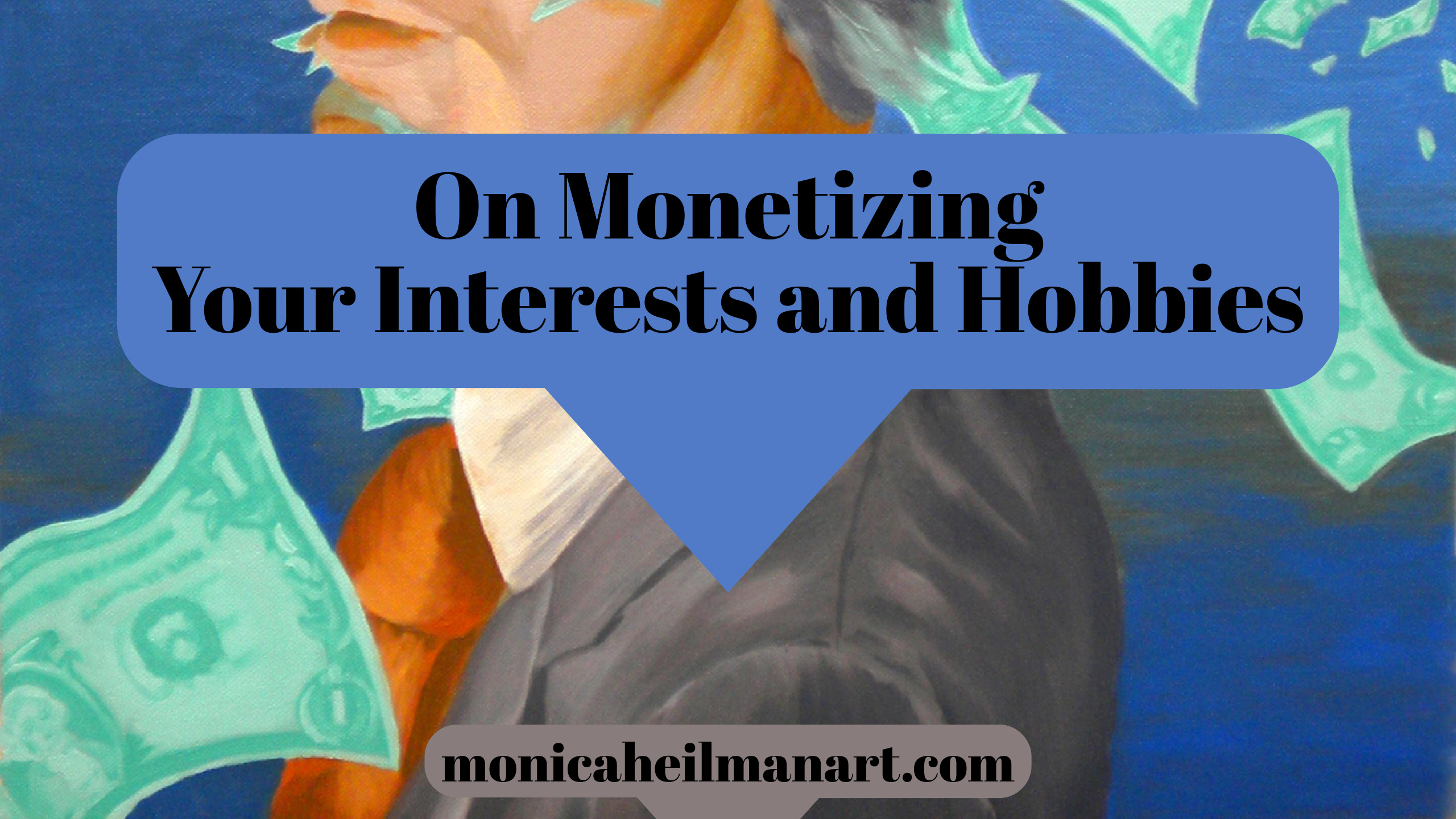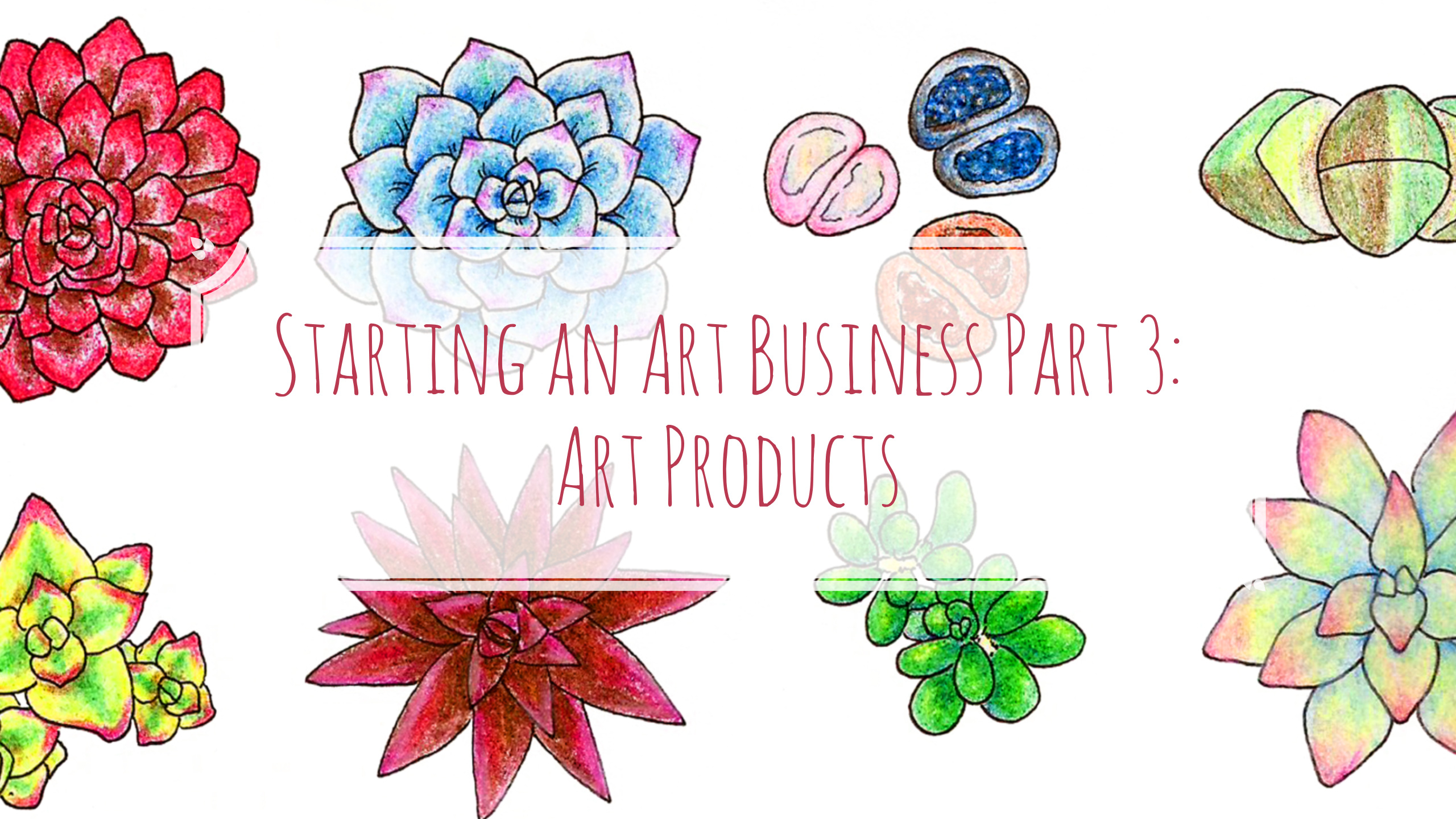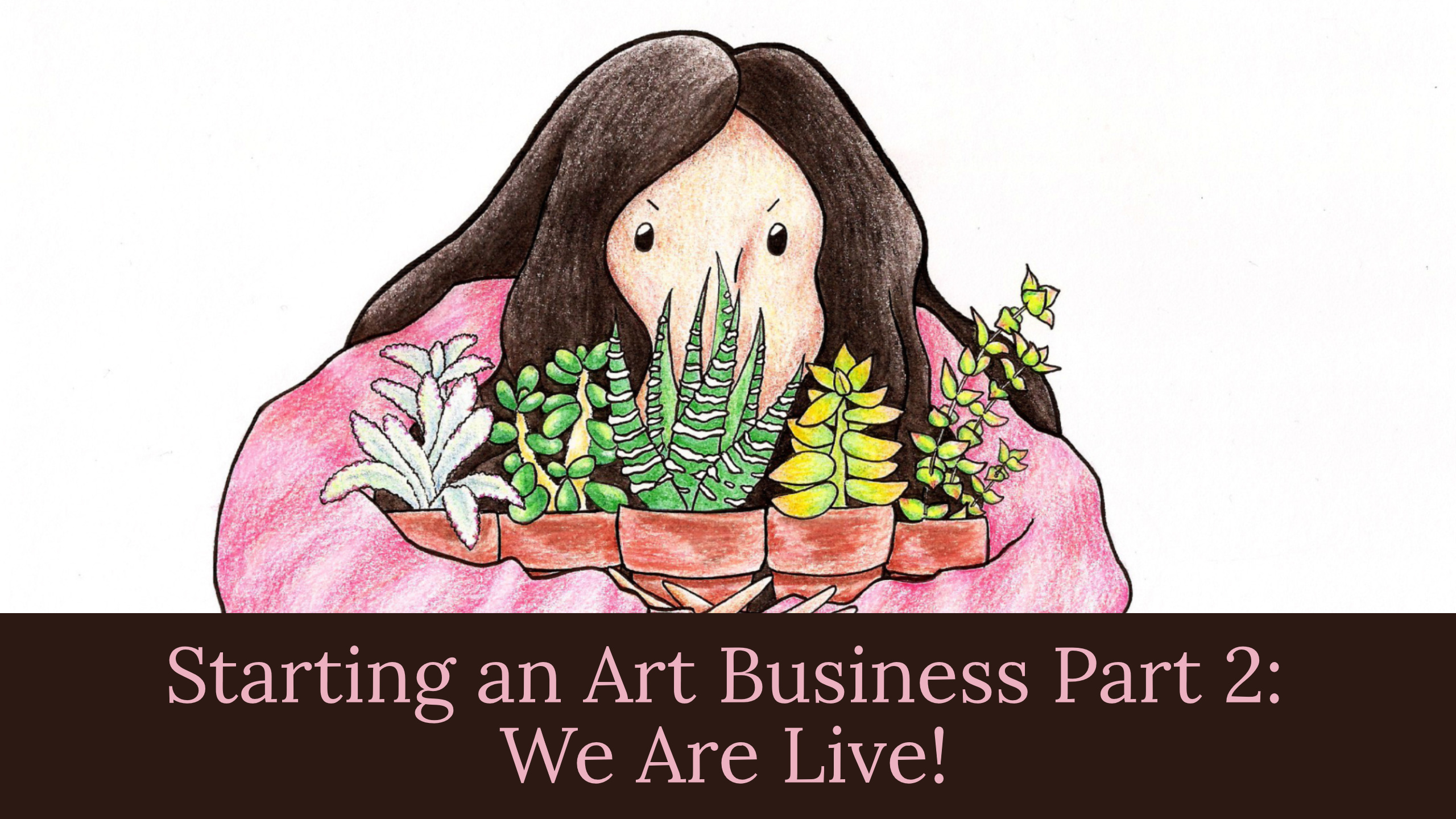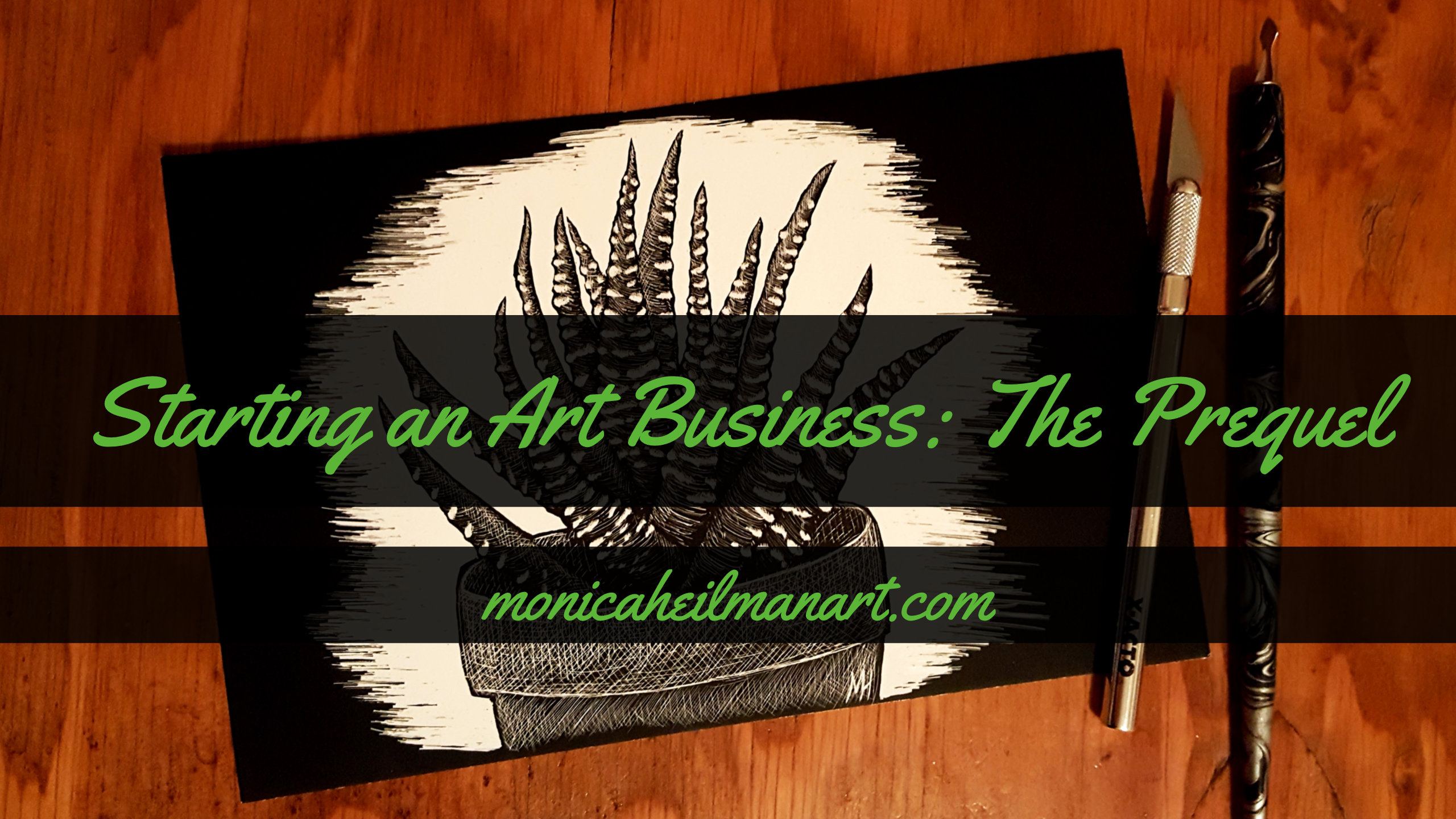
It’s been a few months since I wrote a “Starting an Art Business” post. And I’m happy to say this one will be the last. Not because I’m sick of writing these, but because as I continue to grow and make actual sales, the title “starting” is no longer accurate.
That being said, today’s topic still feels very much like a beginner topic, so I’m keeping it.
Remember how past “Art Biz” posts included a Stresses and Successes section? Well, this post is like a giant Stresses section. I’m talking about a topic that’s been a source of stress from the beginning.
The Brand Identity Crisis
For me, the most confusing part of starting a business was not the paperwork or website set-up – you can find people or use Google to help with that – but branding. There are dozens of how-to articles on every business topic imaginable, but no one can tell you how to do your branding.
That doesn’t mean people don’t try. You’ll find just as many articles on branding as you will on any other business topic, but no clear “right” answer. Brand identity is too personal for that.
Challenge #1: What is My Brand?
Honest answer: I still don’t know. “You do succulent art!” you might say if you’ve looked at my Etsy shop recently. But that’s assuming my shoddy branding has been effective. I started off as succulent-centered art shop and one year ago, I would have been perfectly happy to stay within that space.
Now my succulent craze has died down a bit. I can’t say whether that’s because I’ve had time to cool down or my windowsill has no more space for tiny plants. But my reduced passion for succulents is probably a realistic reflection. If I’m honest, I can acknowledge that succulents are a bit of a fad. And if my brand is based around succulents, what happens if they go out of style? What about people who like my art but don’t really care about succulents? What about my other interests? Believe or not, I like other things too! Shocking, right?
I don’t regret not starting with a clear brand. If I’d been too focused on branding and getting all the little details right like colors and fonts, I might have never started an art business. I’d still be puzzling over “my brand.” I’m sure this isn’t good business advice, but developing a strong brand, especially when it’s a personal brand, will take time.
Challenge #2: But I’m Interested in Many Things!
Having multiple interests is nice. Until you have to choose between them to develop a personal brand as an artist. I’m indecisive about little things like where to eat out for lunch. So you can imagine that choosing a focus for my art brand was like drowning in an ocean of possibilities. And still is, I suppose?
Since I’ve discovered Emilie Wapnick’s work, I’ve enjoyed claiming the title “multipotentialite.” In short, it means someone who has a wide variety of interests and needs to pursue more than one to feel satisfied. Emilie’s TED Talk “Why Some of Us Don’t Have One True Calling” explains it better than I could. If the title speaks to you, it’s well worth the watch.
Starting an art business may be a good way to satisfy the artist side of my multipotentialite self, but art can be anything. I wondered if my art business should…
- Run with the succulents theme (But I’m itching to do more)
- Focus more broadly on nature (I’m from Colorado, that’s doable)
- Turn toward social justice (just check out “Campus Climate” or “Delusions of Diversity“)
- Or try…fan art?
Challenge #3: Original Art or Fan Art?
This point may seem hyper-specific and only relevant to art businesses…but there’s probably a wider application in here somewhere. In the months that I spent not writing for this blog post series, I went back and forth on this point quite a bit.
Original art is great. And the best for selling. It’s all your own work so legally, you’re 100% in the clear. But several artists I follow make a living off of fan art. Or at least, seem to do pretty well for themselves. I don’t really know anything about their finances.
I’ve heard artists recommend starting with fan art to build a customer base and then start doing original art once you’re more widely known. But I’ve also heard that artists who focus on original art sell better than artists who only make fan art in the long run. This is all word-of-mouth, but that sounds right.
Original art is more profitable, sustainable, and for me, more satisfying. But fan art is tempting for several reasons:
- The pin community is all about fan art.
- People buy pins to show off their fandoms.
- Fan art = artwork with a built-in fan base.
Fan art is appealing, particularly the built-in audience part. As I write this post, it occurs to me that using fan art feels like cheating the system – what about the thousands of artists who have had to work their butts off to gain recognition (and often failed). But the flip side of that opinion is that fan art is a wise business choice. You see it when businesses jump on the latest popular fandom, with no evidence that they actually like show or books or movie. That turns me off from a business. But as someone who’s not particularly vocal about her fandoms, I wonder if I come across in the same way.
I also wondered if fan art would “water down” my brand. Then came my big epiphany: what brand? Did I have some well-established brand where everyone would be shocked if I went off and did something different? No, obviously. Not at all.
Fortunately You Can Learn as You Go
I may not have a useful list of tips today, but I’ll leave you with my mindset shift. A brand identity doesn’t have to be set in stone. I can experiment and play around and “discover” my brand.
Many marketers and entrepreneurs would probably hate seeing this advice circulated. And sure, if I wanted to hit the ground running, make a lot of money, and grow my brand as quickly as possible, I wouldn’t recommend this either.
….Buuut, it’s a bit like life. Are you born know exactly who you want to be when you grow up? Do you know right now who you want to be as you grow up? Lots of you probably thought no.
And who knows, maybe if I find myself starting a business again someday, I’ll be more set on the brand identity thing and have a clearer idea of where I want to go. Probably. that sounds likely.
Stresses and Successes
It wouldn’t really be a “starting an art business” post without stresses and successes, would it? So here’s a brief update of how I’ve been:
Stresses:
- This whole brand thing
- My website isn’t actually mobile-optimized so it looks super boring on a phone
- Not many sales – am I not growing fast enough?
- Producing more pins is expensive
- How will my art business fit in during grad school?
- Debating a starting new Kickstarter and how the timing would work with my move
Successes:
- Decided/gave myself permission to experiment!
- Hit 7 sales on Etsy! (even though I worry about not making sales, each sale is exciting)
- 3 reviews on Etsy!
- New Ghibli pins arrived
- New backing cards were satisfying to make and turned out beautifully
- Opened a Storenvy
- Bought Monicartsy.com domain for potential future plans
You can look forward to individual posts on some of these topics and that new “Running an Art Business” series within the next couple months!
Other posts in Starting an Art Business:
- Starting an Art Business Part 1: The Prequel
- Starting an Art Business Part 2: We Are Live!
- Starting an Art Business Part 3: Art Products
- Or visit Monicartsy on Etsy or Storenvy














